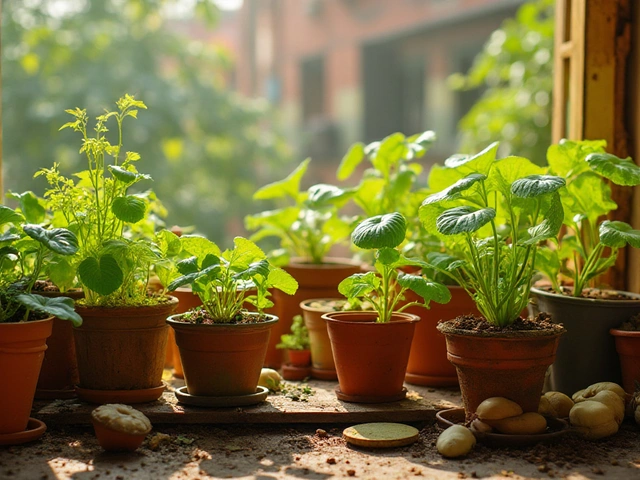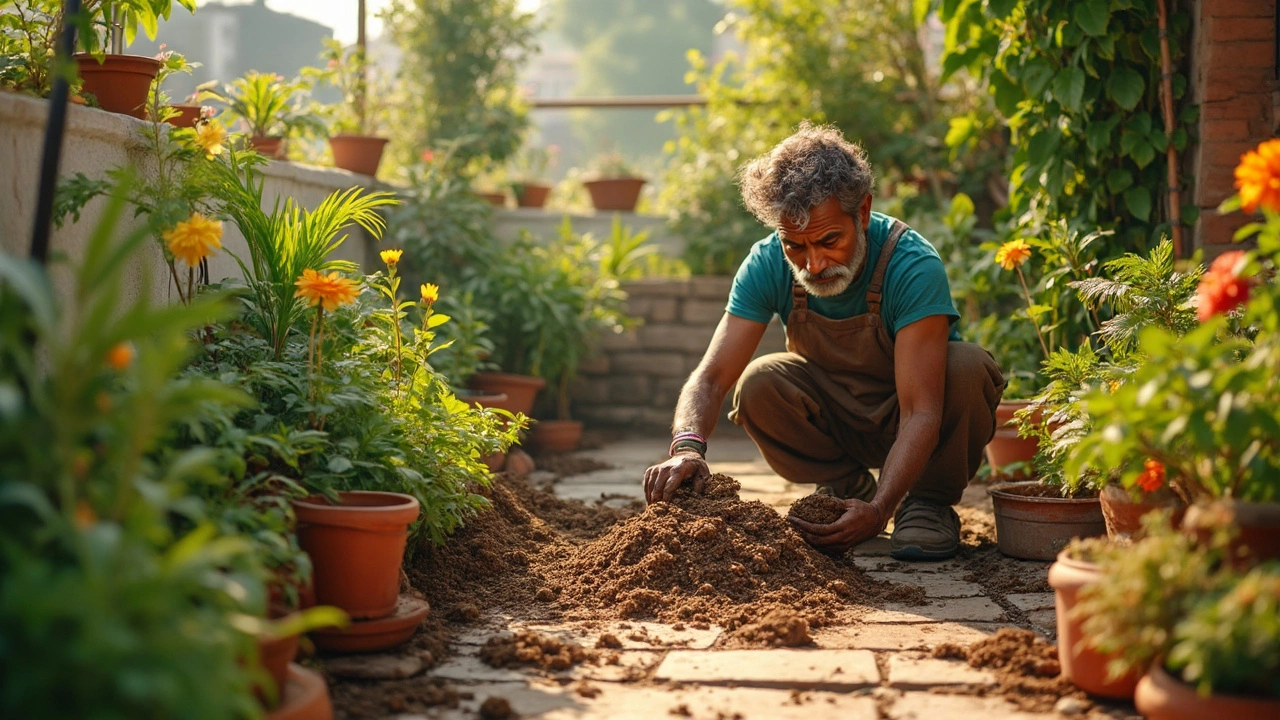Top Soil Basics for Indian Gardens
If you’re starting a garden or trying to revive a tired patch, the first thing to check is the top soil. It’s the layer where most roots grow, water sits, and nutrients are taken up. Good top soil means healthier plants, less water waste, and bigger harvests. Below we’ll break down what makes great top soil, how to test it, and quick fixes you can do today.
What Makes Good Top Soil?
In India the soil can vary a lot – from heavy clay in the north to sandy loam in the south. The best top soil has three things in balance:
- Texture: A mix of sand, silt, and clay that feels crumbly, not hard or mushy.
- Organic Matter: Compost, leaf mold, or well‑rotted manure that feeds microbes and improves structure.
- pH Level: Most vegetables prefer a pH between 6.0 and 7.0. A simple kit from any garden store can tell you where you stand.
When these parts click, water drains evenly, roots breathe, and nutrients stay available.
Quick Ways to Boost Your Top Soil
Got heavy, compacted soil? Try these low‑cost add‑ins:
- Compost: Add a 2‑inch layer and work it in. It lightens heavy soil and adds microbes.
- Coarse Sand: Mix in about 20% sand to improve drainage in clayey spots.
- Gypsum: If the soil is very compact, gypsum loosens it without changing pH.
- Green Manure: Plant fast‑growing legumes like cowpea, then cut them down and till them in.
These steps are mentioned in our post “How to Loosen Heavy Garden Soil” and work for most Indian regions.
Another easy tip is to mulch around plants. A 1‑inch layer of straw or dry leaves keeps moisture in and adds organic matter as it breaks down.
Don’t forget about soil testing. Many agricultural universities offer free testing for farmers. Knowing the exact nutrient levels helps you add only what’s needed, saving money and preventing excess fertilizer runoff.
Finally, remember that top soil isn’t a set‑and‑forget thing. Seasonal rains, temperature swings, and continuous planting change its structure. A quick visual check every few months – looking for clumps, crusting, or foul smells – tells you when it’s time for a refresh.
By focusing on texture, organic matter, and pH, and using simple amendments like compost or sand, you can turn mediocre soil into a thriving growing medium. Start with a small test patch, apply one or two of the tricks above, and watch your plants respond. Happy gardening!
Mixing Top Soil with Garden Soil: Smart Tips for Terrace Gardening
Want to get the most out of your terrace garden? Mixing top soil with garden soil can boost plant health but requires the right approach to succeed. This article explains why and how to combine these soils, offering practical tips and easy strategies. Discover what makes each soil type unique and learn the secret mix ratios for thriving plants.
About
Terrace Gardening
Latest Posts
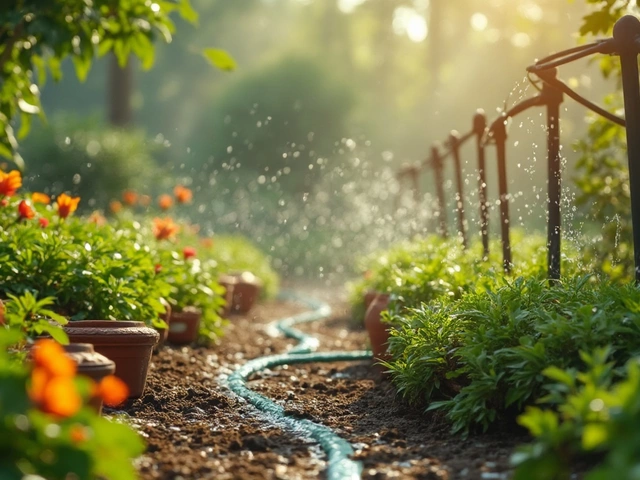
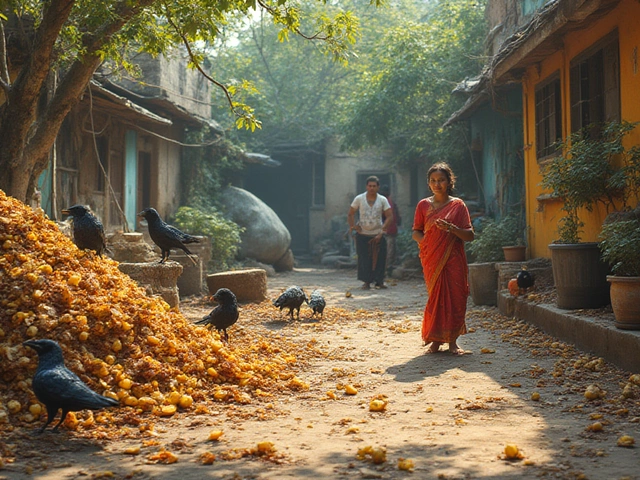
Composting Drawbacks: Real Issues, Surprising Facts, and Smart Tips
By Alden Thorne Jul 4, 2025
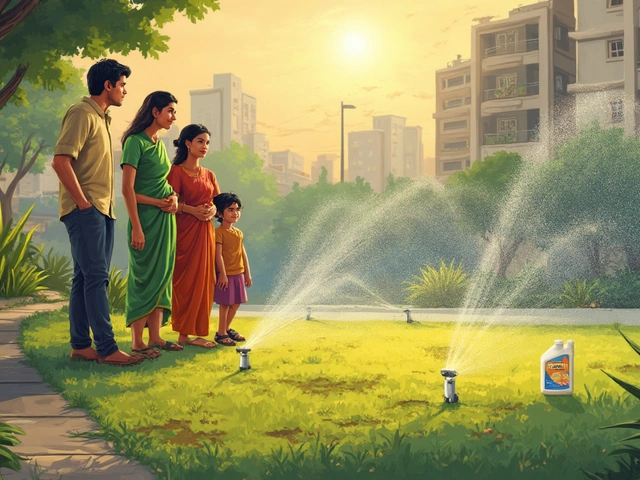
Most Unsustainable Thing? Grass Lawns and the Gardening Problem
By Alden Thorne May 3, 2025
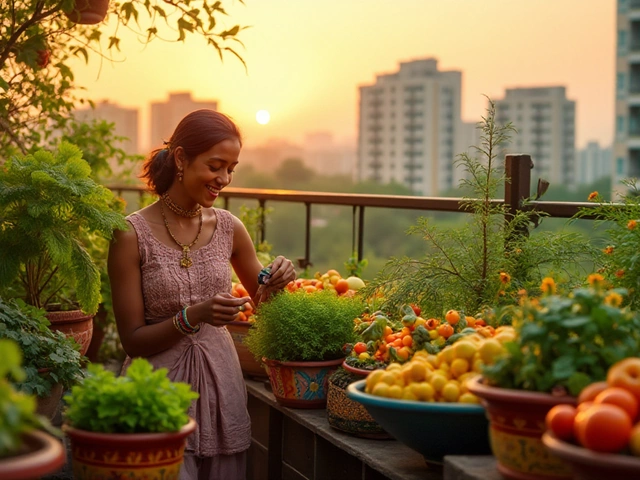
Best Fruits and Vegetables to Grow in Pots for a Thriving Balcony Garden
By Alden Thorne Jan 12, 2025
